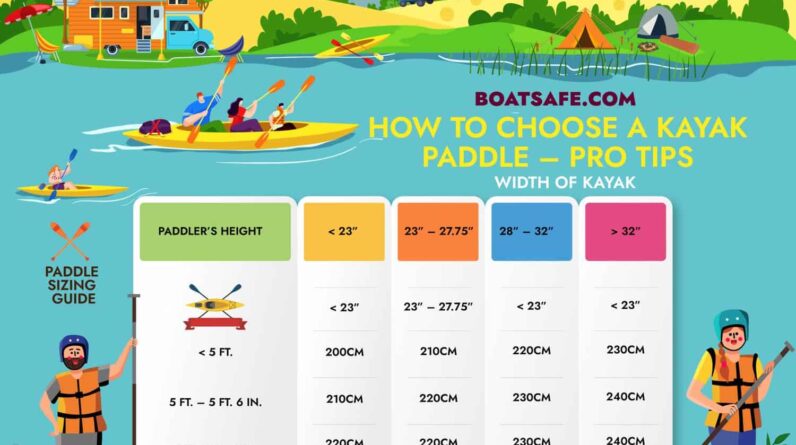
So you’re a water enthusiast looking to embark on a new adventure, but you’re caught in a paddle predicament. You can’t help but wonder about the differences between kayak paddles and canoe paddles. Well, fear not! This article is here to shed some light on the unique characteristics of both paddles, helping you make an informed decision for your next aquatic escapade. Whether you prefer gliding through serene lakes or tackling rapids, understanding the distinctions between these two essential tools will steer you towards the right choice. Get ready to paddle your way towards clarity!
Size and Shape
Length
When it comes to size, kayak paddles and canoe paddles can vary significantly. The length of a paddle is an important factor to consider, as it directly affects the efficiency and ease of your paddling strokes. Generally, kayak paddles tend to be shorter than canoe paddles. This is because kayaks sit lower in the water, and a shorter paddle allows for more control and maneuverability in tighter spaces. On the other hand, canoe paddles are typically longer, as they need to reach down into the water from a higher position.
Blade Shape
Another difference between kayak paddles and canoe paddles lies in their blade shape. Kayak paddles usually have a symmetrical blade shape, with the fins on each side being equal in size and shape. This allows for an even distribution of force during your paddle strokes, making them more efficient. On the other hand, canoe paddles often feature a blade shape that is asymmetrical. This design allows for a more powerful stroke, as one side of the blade has a larger surface area, providing greater resistance when pulling through the water.
Materials
Wood
One of the most traditional materials used in paddle construction is wood. Wooden paddles have been used for centuries and offer a timeless and classic look. They are often crafted from high-quality hardwoods such as ash, cedar, or cherry, which provide excellent durability and longevity. Wooden paddles are known for their great balance and natural feel in the water. However, they can be heavier than other materials and may require more maintenance to prevent warping or rotting.
Fiberglass
Fiberglass is a common material used in the construction of both canoe and kayak paddles. It offers a balance between weight, durability, and affordability. Fiberglass paddles are lightweight, making them easy to maneuver and less fatiguing during long paddling trips. They also provide good strength and stiffness, allowing for efficient power transfer. Additionally, fiberglass paddles are typically resistant to rotting or warping, making them a popular choice among paddlers.
Carbon Fiber
For those seeking the ultimate in performance and lightweight design, carbon fiber paddles are an excellent choice. Carbon fiber is a high-tech material that provides exceptional stiffness and strength while keeping the paddle extremely lightweight. Carbon fiber paddles offer superior power transfer and reduce paddler fatigue, allowing for longer and more efficient paddling sessions. However, they do come with a higher price tag compared to other materials.
Plastic
Plastic paddles are often the most affordable option on the market. They are durable and resistant to impact, making them suitable for paddling in rocky or shallow waters where the risk of damage to the paddle is higher. Plastic paddles are also relatively lightweight, making them a popular choice for recreational paddlers or beginners. However, they may lack the same level of performance and efficiency as paddles made from other materials.
Aluminum
Aluminum paddles are another economical choice for paddlers. They are lightweight, corrosion-resistant, and easy to maintain. Aluminum paddles are often adjustable, allowing for customization of the length to fit various paddler heights. They provide decent performance and durability, making them suitable for casual paddling adventures. However, aluminum paddles may lack the same level of stiffness and power transfer as those made from carbon fiber or fiberglass.

This image is property of canoeing.com.
Weight
The weight of your paddle can have a significant impact on your paddling experience. A lighter paddle will make paddling more effortless and reduce fatigue during long trips. Carbon fiber paddles are known for being the lightest, followed by fiberglass and then wood. Plastic and aluminum paddles are generally heavier, which can make them less ideal for those looking for a more comfortable and efficient paddling experience. However, it’s important to find a balance between weight and durability, as lightweight paddles may not always be as tough and resilient as their heavier counterparts.
Design
The design of a paddle encompasses various key components that can greatly affect your paddling experience. These components include the shaft, grip, and blade.
Shaft
The shaft of a paddle is the main part that you hold onto while paddling. It can come in different shapes and sizes to accommodate personal preferences. Some paddles feature a straight shaft, while others have a bent or ergonomic design. A bent shaft can provide a more comfortable and natural grip, reducing wrist and arm fatigue. Additionally, some paddles have adjustable shafts that allow you to customize the length to fit your specific needs.
Grip
The grip of a paddle is where you place your hands while paddling. It should provide a comfortable and secure hold, allowing for effective control and power transfer. Grips can be made of various materials, including rubber, foam, or even wood. Some paddles feature ergonomically designed grips that conform to the shape of your hand, reducing strain and offering a more comfortable paddling experience.
Blade
The blade of a paddle is the part that enters the water and propels you forward. It can come in different shapes and sizes, each offering different benefits. Some blades have a larger surface area, providing more power and efficiency with each stroke. Others have a narrower design, allowing for faster and more precise movements through the water. The shape and angle of the blade can impact how it enters and exits the water, affecting the overall performance and efficiency of your strokes.
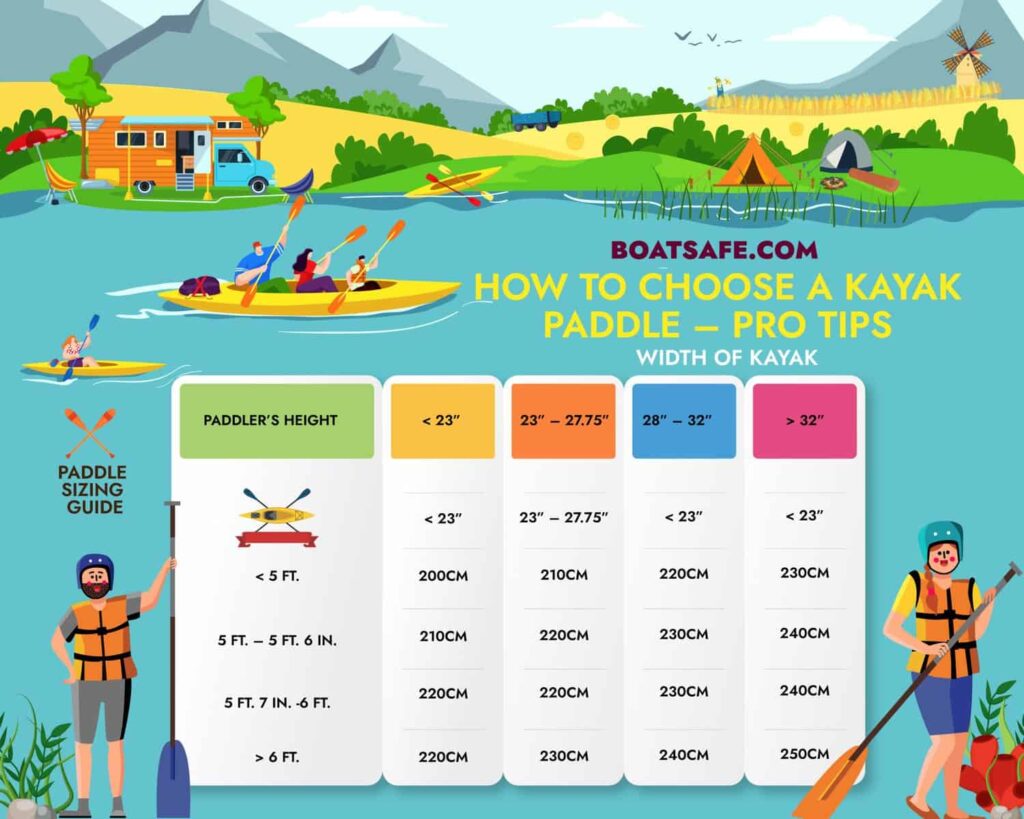
This image is property of www.boatsafe.com.
Purpose
Consider the purpose for which you will be using your paddle. Kayak paddles are specifically designed for kayaking, while canoe paddles are designed for canoeing. Each type of paddle is optimized for the specific needs and characteristics of its corresponding watercraft. Kayak paddles are typically shorter and have symmetrical blades to enhance maneuverability and control. Canoe paddles, on the other hand, are longer and often have asymmetrical blades to provide more power for navigating larger bodies of water.
Power and Efficiency
The power and efficiency of a paddle are crucial factors to consider, as they directly affect your ability to propel yourself through the water. The blade shape, size, and material can significantly impact the power and efficiency of your strokes. Paddles with larger blades generally provide more power but require more effort to paddle. Smaller blades, on the other hand, allow for faster and more frequent strokes, ideal for activities that require quick maneuvers or speed. Additionally, the material of the paddle, such as carbon fiber or fiberglass, can enhance power transfer and reduce energy loss, maximizing the efficiency of each stroke.
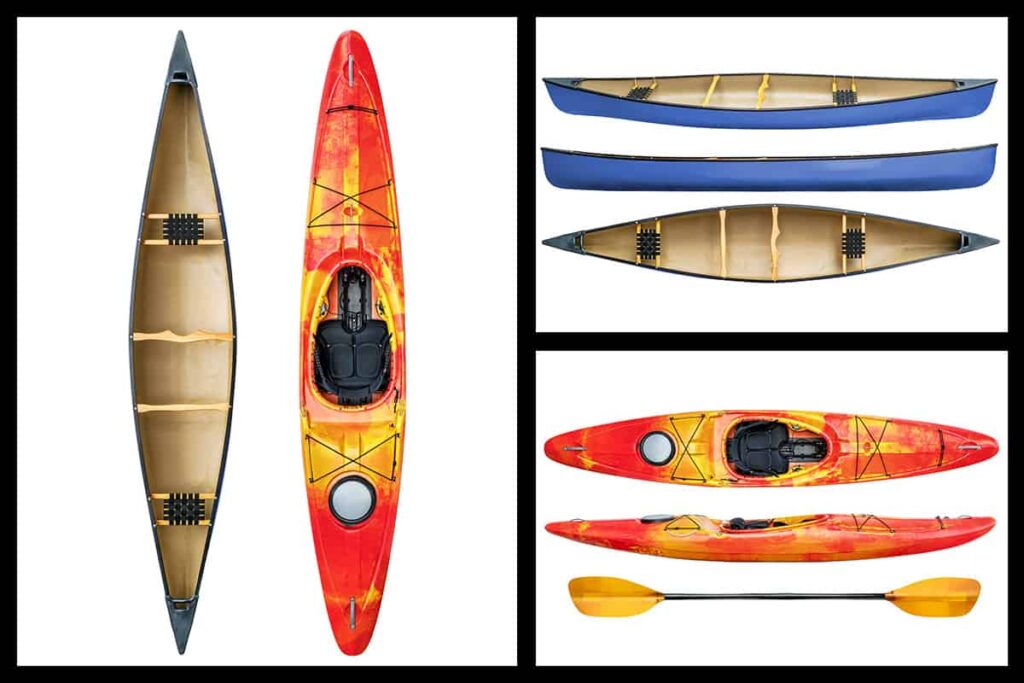
This image is property of paddlecamp.com.
Durability
Durability is an essential aspect to consider when choosing a paddle. The durability of a paddle depends on the quality of materials used in its construction. Wooden paddles, especially those made from high-quality hardwoods, are known for their excellent durability and longevity. Fiberglass and carbon fiber paddles are also durable choices, as they are resistant to impacts and tend to withstand the test of time. Plastic and aluminum paddles, while more affordable, may not offer the same level of durability and can be more prone to wear and tear.
Price Range
The price range for paddles can vary significantly depending on the materials used, brand, and specific features. Wooden paddles are often on the higher end of the price range, as they are crafted from premium hardwoods and offer a luxurious aesthetic. Carbon fiber paddles are typically the most expensive due to their exceptional performance and lightweight design. Fiberglass paddles provide a good balance between affordability and performance. Plastic and aluminum paddles are usually the most budget-friendly options, making them suitable for beginners or recreational paddlers.
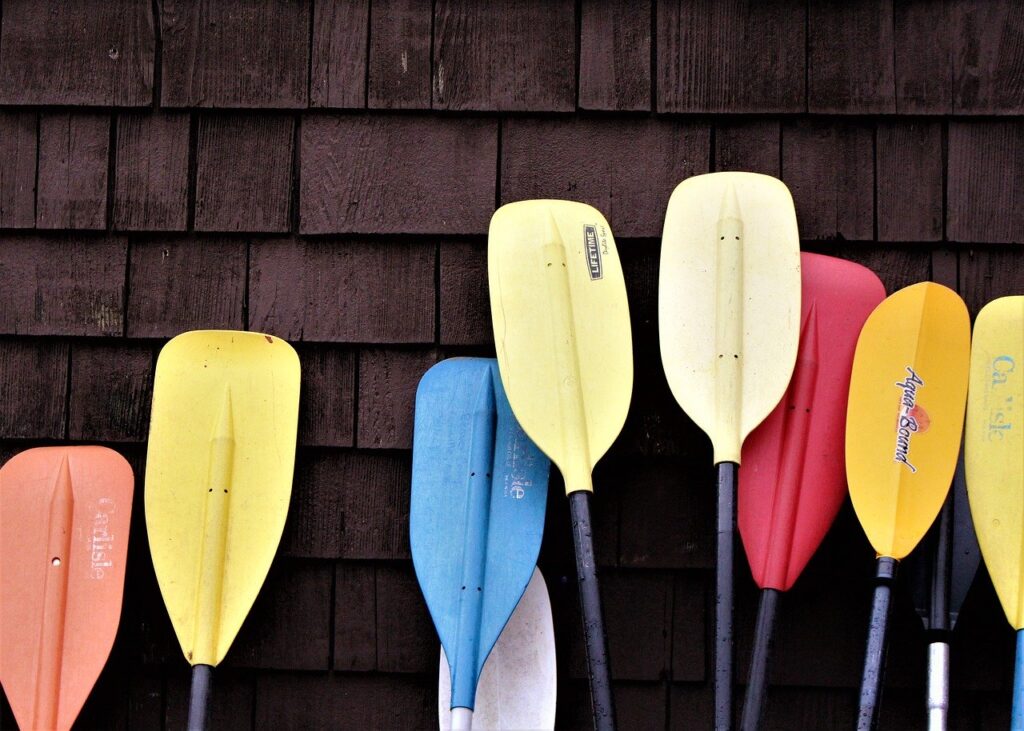
This image is property of standuppaddleboardworld.com.
Transportation and Storage
Consider the transportation and storage aspects of your paddle. If you plan on traveling or need to pack your paddle in a small space, collapsible or adjustable paddles may be a good option. These paddles can be shortened in length or disassembled into smaller pieces, making them easier to transport or store. Traditional one-piece paddles, such as those made from wood or carbon fiber, may require more space and careful handling to protect them from damage during transportation.
Personal Preference
Ultimately, personal preference plays a significant role in choosing the right paddle for you. Factors such as weight, material, grip style, and design can vary based on individual preferences and paddling style. It’s important to try out different paddles and consider renting or borrowing before making a purchase. By testing out different options, you can get a better feel for what suits you best and will enhance your overall paddling experience. Additionally, seeking advice from experienced paddlers or professionals can provide valuable insights and help guide you towards the paddle that aligns with your personal preferences and needs.
In conclusion, kayak paddles and canoe paddles have differences in size, shape, materials, weight, design, and purpose. It’s crucial to consider these factors and understand how they can impact your paddling experience. Whether you opt for a wooden, fiberglass, carbon fiber, plastic, or aluminum paddle, each material offers its unique benefits and considerations. Remember to prioritize power and efficiency, durability, and personal preference when choosing the right paddle for your adventures on the water. So, get out there and start exploring with the perfect paddle companion!
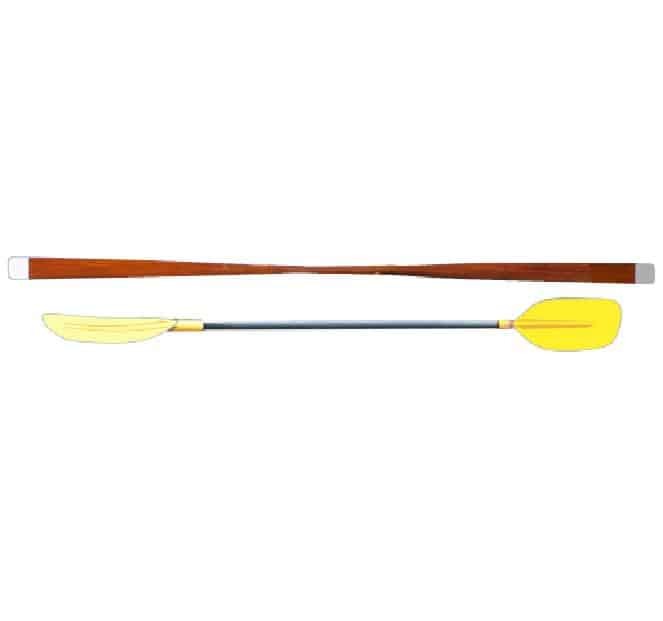
This image is property of cdn.divein.com.


